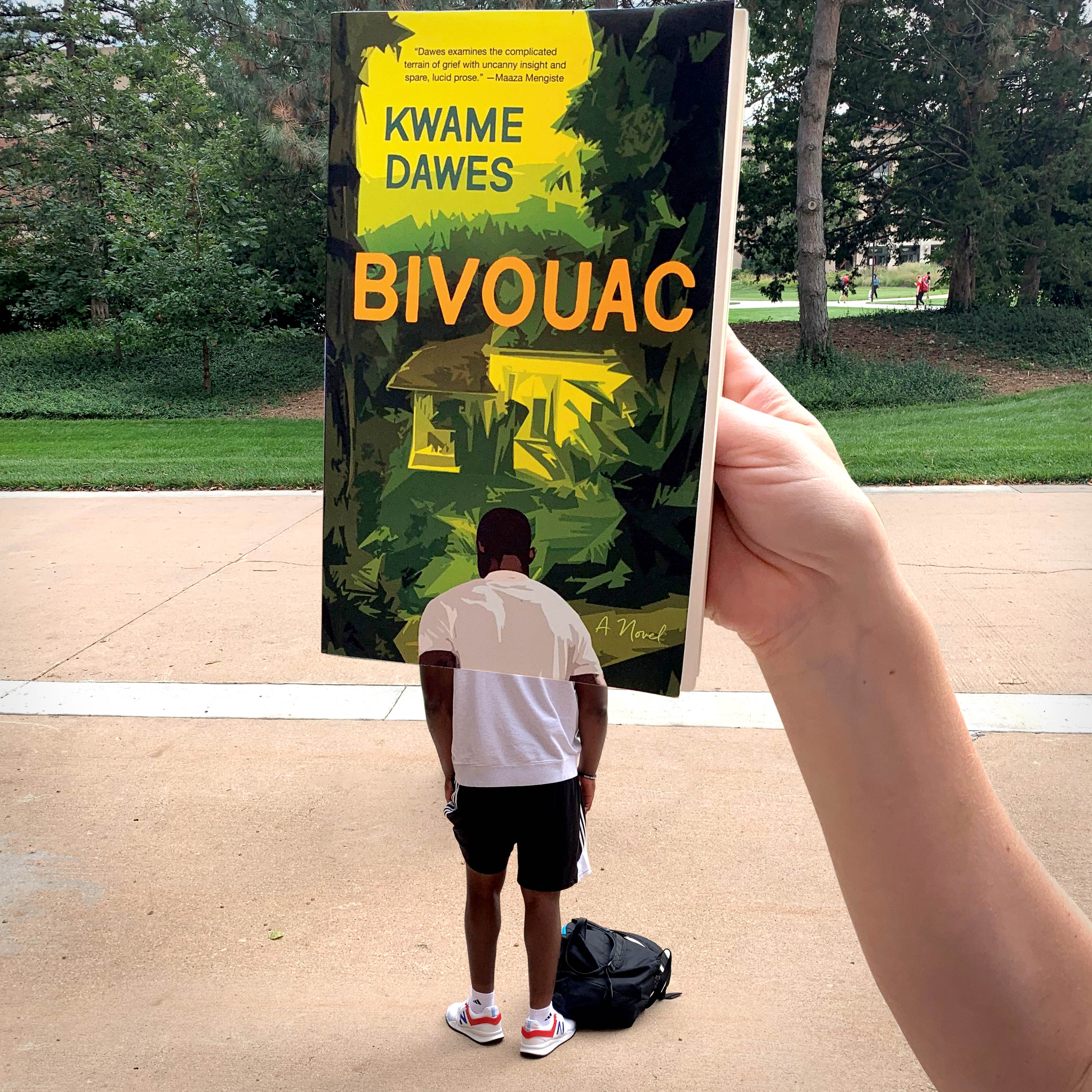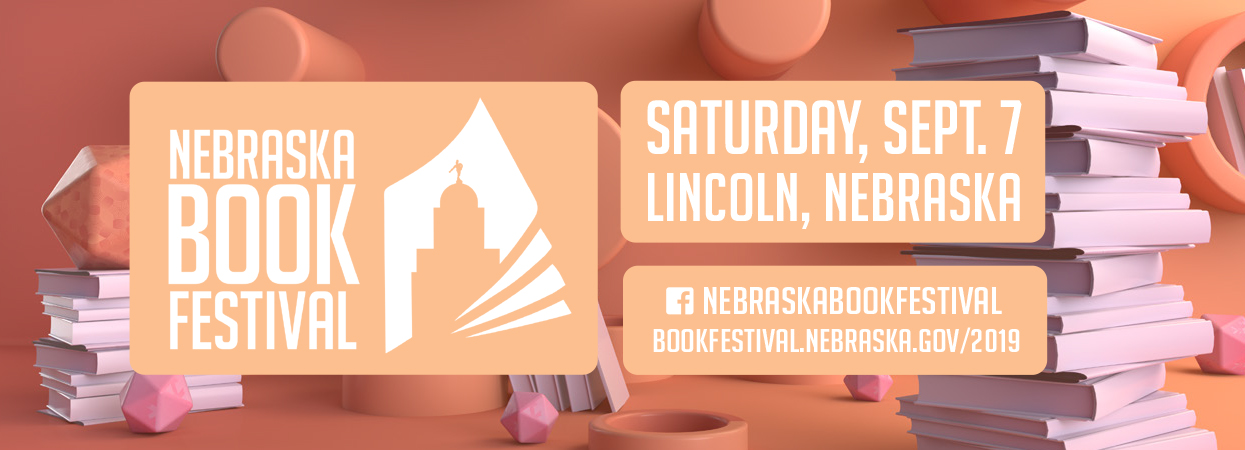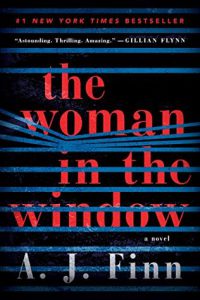Search the Blog
Categories
- Books & Reading
- Broadband Buzz
- Census
- Education & Training
- Friday Reads
- General
- Grants
- Information Resources
- Library Management
- Nebraska Center for the Book
- Nebraska Libraries on the Web
- Nebraska Memories
- Now hiring @ your library
- Preservation
- Pretty Sweet Tech
- Programming
- Public Library Boards of Trustees
- Public Relations
- Talking Book & Braille Service (TBBS)
- Technology
- Uncategorized
- What's Up Doc / Govdocs
- Youth Services
Archives
Subscribe
Tag Archives: #FridayReads
Friday Reads: The Line Between by Tosca Lee
Cults, the impending apocalypse, and an ancient plague.

Wynter and her sister spent fifteen years within the walls of the New Earth doomsday cult compound under the charming leadership of Magnus, an ambassador to God himself. As Wynter’s sister, Jaclyn, seemed to thrive in this world, Wynter struggled.
After she’s cast out from her family and community, Wynter is forced into the outside world just in time for it to start ending. An ancient disease has been freed from the melting Alaskan permafrost and is sweeping across America causing victims to fall into madness (as well as general societal chaos and violence). Late one night, Jaclyn reappears with medical samples that might just hold the key. Now Wynter must find a way to get them to a research lab in Colorado before the world really does end as prophesied by Magnus.
The story alternates between past/present, through Wynter’s time living in the compound, to her banishment, as she connects with old family friends and tries to adjust to the outside world, then through the dangerous journey to save (and understand) the world with the help of former military, Chase Miller.
The sequel (A Single Light) comes out September 17th. (Don’t worry though, this first book doesn’t end with a big cliff-hanger.)
Don’t miss Tosca Lee tomorrow at the Book Festival!
Saturday, September 7th 1:00-2:30 p.m.
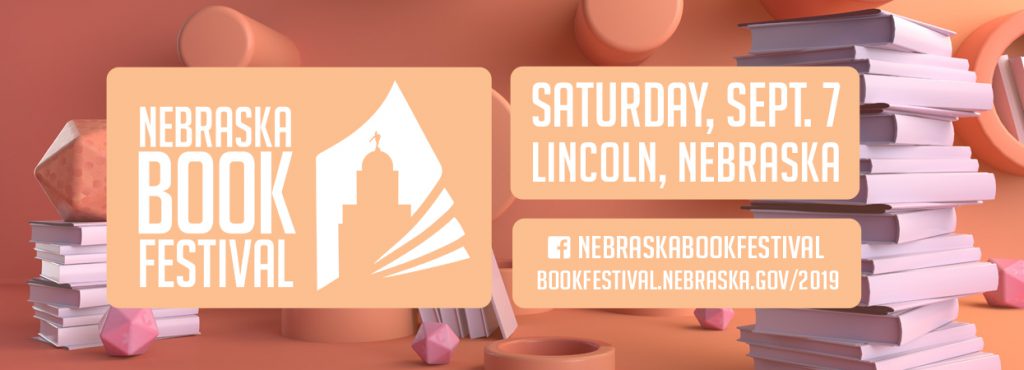
Friday Reads & BookFace Friday: Bivouac by Kwame Dawes
I’m reading Bivouac by Kwame Dawes, and I’m reminded that the 1980s were more than a station on your satellite radio. (And does your 80s station play Burning Spear as well as Musical Youth?) The novel is set in Jamaica, and politics are tumultuous throughout the region, and the activist father of our protagonist has died. It could be murder, but that murder might be medical malpractice, or it might have been as assassination.
Dawes uses a notable structural technique in telling the book from more than one viewpoint, and it feels modern as storytelling, extratextual—and the structural choices in form suggest to the reader that they consider the structural forms of the novel, and of family, and of political organization.
The formal structure only helps the reader become more intimate with the characters, and there is much to know. I’m thinking about the problem of guilt for a person who does not have good luck, but has still better luck than people close to them. I’m thinking about how a person can lose a progenitor but have that family live on as a symbol of something important to them—and how that can create tension between the love they feel for family, and the reality they have to continue to live in without that family present. You can’t resolve anything with someone who is gone, except by resolving with yourself. And everyone who is left behind has their own grief, and not all grief gets along.
Review by Lynda Clause, Nebraska Library Commission employee
Dawes, Kwame S. N. Bivouac: A Novel. , 2019. Print.
Meet the author at the upcoming Nebraska Book Festival September 7th in Lincoln.
Posted in Books & Reading
Tagged #FridayReads, Bivouac, bookface, bookfacefriday, Friday Reads, Kwame Dawes, Nebraska Author, Nebraska Book Festival
Leave a comment
Friday Reads: Heart Land by Kimberly Stuart
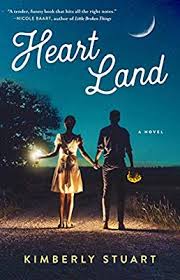 I read Heart Land to highlight this author’s visit to our upcoming Nebraska Book Festival September 7th in Lincoln. I could have easily shared this book with my mom as it fits into the genre of authors she liked including Jan Karon and Rosamunde Pilcher. This book follows the Hallmark movie recipe of an urban woman interrupting her hectic life to return to her rural hometown. Upon her arrival, she discovers love and a new appreciation for a slower pace of life.
I read Heart Land to highlight this author’s visit to our upcoming Nebraska Book Festival September 7th in Lincoln. I could have easily shared this book with my mom as it fits into the genre of authors she liked including Jan Karon and Rosamunde Pilcher. This book follows the Hallmark movie recipe of an urban woman interrupting her hectic life to return to her rural hometown. Upon her arrival, she discovers love and a new appreciation for a slower pace of life.
Such is the case with Grace Kleren, who graduated top of her class from the Fashion Institute of Technology with dreams of being a successful clothing designer. Having lost both of her parents in a car crash as a teen, she suffered a crisis of faith. Grace is fired from her job after pitching her clothing line to the boss, and unable to pay the bills, she returns to her Iowa hometown to live with her Grandma Gigi. On her first day job hunting, she almost runs over her high school boyfriend Tucker. Happily, there are no injuries but finding a way to earn a living requires some ingenuity.
Working with Gigi, the Church Sewing Club, and some vintage fabric, Grace finds a new and lucrative way to exhibit her design creativity. A few postings on Etsy prove that others also appreciate her design aesthetic. Soon she receives national attention in an online fashion magazine and an invitation to New York. As Grace navigates the conflicts between her head and her heart, her journey is about finding her own truth and what matters most. All of this happens with the encouragement of those who have always loved her in rural Iowa, where life is less exciting, but a good place to sort out Plan B.
Stuart, Kimberly. Heart Land. Howard Books (2018)
Posted in Books & Reading
Tagged #FridayReads, Friday Reads, Heart Land, Kimberly Stuart, Nebraska Book Festival
Leave a comment
Friday Reads: “Pretend I’m Dead” and “Vacuum in the Dark” by Jen Beagin
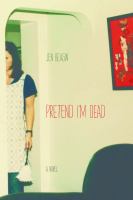 I read a review for Vacuum in the Dark and discovered that it was the sequel to Jen Beagin’s 2015 debut novel, Pretend I’m Dead. The latter tells the story of Mona, a 24-year-old cleaning woman in Lowell, Massachusetts, who just can’t seem to find her place in the world. Mona volunteers at a clean-needle exchange, collects vintage vacuum cleaners, and has an inner-dialogue with NPR’s Terry Gross (“This is Fresh Air!”). After a doomed relationship with a junkie, she moves to Taos, New Mexico.
I read a review for Vacuum in the Dark and discovered that it was the sequel to Jen Beagin’s 2015 debut novel, Pretend I’m Dead. The latter tells the story of Mona, a 24-year-old cleaning woman in Lowell, Massachusetts, who just can’t seem to find her place in the world. Mona volunteers at a clean-needle exchange, collects vintage vacuum cleaners, and has an inner-dialogue with NPR’s Terry Gross (“This is Fresh Air!”). After a doomed relationship with a junkie, she moves to Taos, New Mexico.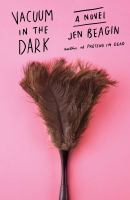
The rest of the novel, and the next book, follow Mona as she builds her house cleaning business in Taos (getting to know her clients in person and through their belongings; if you ever thought your cleaning person didn’t snoop, you’d be wrong). She makes poor decisions and weird friends, follows a man to Bakersfield, California, and confronts her past… and her future.
Each book can be read as a stand-alone, but I’d suggest reading them in order. Neither is terribly long – about 240 pages each. If you enjoy gallows humor, quirky characters, and discussions of cleaning products, Mona is the anti-heroine you’ve been waiting for.
Beagin, Jen. Pretend I’m Dead. Northwestern University Press, 2015.
Beagin, Jen. Vacuum in the Dark. Scribner, 2019.
Friday Reads: ‘Redshirts’ by John Scalzi
 I’m going to start off my review of Redshirts with a bold statement. If you are a fan of Star Trek – you need to read this book! And if you are a fan of Star Trek, the title should probably have been an obvious clue.
I’m going to start off my review of Redshirts with a bold statement. If you are a fan of Star Trek – you need to read this book! And if you are a fan of Star Trek, the title should probably have been an obvious clue.
For the uninitiated, ‘redshirt’ is the term that fans use to refer to the expendable crew members in the Star Trek universe. Whenever you see a landing party heading down to a planet, and a previously unknown character has been added to the team, you can almost guarantee that they are destined to die, in some horrific and/or ridiculous way. Typically these characters are security personnel, who wear red shirts as their uniform.
But, what if these particular crew members started noticing the trend, realizing that their friends and colleagues keep dying on away missions, more often than should be statistically possible. What would they do about it? Can they do anything about it? You’ll definitely be surprised by what they discover and how they try to save their own lives.
John Scalzi is a brilliant writer, and I think Redshirts is one of his best. It’s creative, funny, heart-wrenching, and thought provoking. I admit it, I literally laughed out loud many times while reading this book. If you like Star Trek, sci-fi parody, and yes, even time travel, I think you’ll really enjoy Redshirts.
And if you like audiobooks, this one is read by none other than Wil Wheaton. Yes, Wesley Crusher from Star Trek: The Next Generation. Perfect casting!
Friday Reads: What Elephants Know by Eric Dinerstein
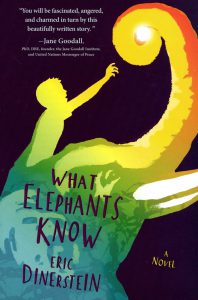 Set in the 1970s, Nandu (12) was found alone at about age 2, except for a pack of wild dogs protecting him, in the Nepalese Borderlands, having been abandoned by his parents. He was unofficially adopted by the Subba-sahib, the head of an elephant stable in the Borderlands, a very southern part of Nepal. The King of Nepal owns the stable and the elephants, but only rides once a year to hunt tigers in the area. Nandu is learning to handle elephants and become a mahout (an elephant trainer) – his charge is an older female elephant called Devi Kali, and she is protective of him.
Set in the 1970s, Nandu (12) was found alone at about age 2, except for a pack of wild dogs protecting him, in the Nepalese Borderlands, having been abandoned by his parents. He was unofficially adopted by the Subba-sahib, the head of an elephant stable in the Borderlands, a very southern part of Nepal. The King of Nepal owns the stable and the elephants, but only rides once a year to hunt tigers in the area. Nandu is learning to handle elephants and become a mahout (an elephant trainer) – his charge is an older female elephant called Devi Kali, and she is protective of him.
The beauty and danger of nature is explored and appreciated, as Nandu, Devi Kali, and other mahouts and elephants walk to the river for the elephants’ baths and sometimes must go into the jungle. Orphan rhino calves are rescued by the boys and tended by Rita, the sister of Nandu’s friend, Dilly. And sometimes the wild dogs provide unexpected assistance.
When Nandu is sent away to school, hopefully to learn things that will help the stable, he finds bullies and a couple of friends. One teacher accepts his invitation to visit the stable, and Father Autry’s wisdom is very helpful to Nandu and the Subba-sahib. The stable is threatened with closure, and at first the Subba-sahib takes no action, only waiting for the King’s reply to his request not to close. Things are beginning to look dire when Rita suggests they change their focus to becoming a breeding stable. It becomes Nandu’s job to travel to the elephant sale and buy a tusker worthy of their elephants, an event he has never attended and something he knows little about. Will he be successful and will that keep the stable alive?
Books that contain a great story and some actual facts about animals have always appealed to me. This title will appeal to middle grade readers (grades 4-7) who are likewise interested in animal stories. I have not yet read the companion novel (listed below), but I am going to have to find myself a copy.
Awards include winning the 2017 South Asia Book Award for Children’s and Young Adult Literature, and being named a 2017 ALA Notable Children’s Book.
What Elephants Know is followed by A Circle of Elephants: A Companion Novel, which was published in January of 2019.
Dinerstein, Eric. What Elephants Know. Disney-Hyperion, 2016.
Friday Reads: The Last Policeman
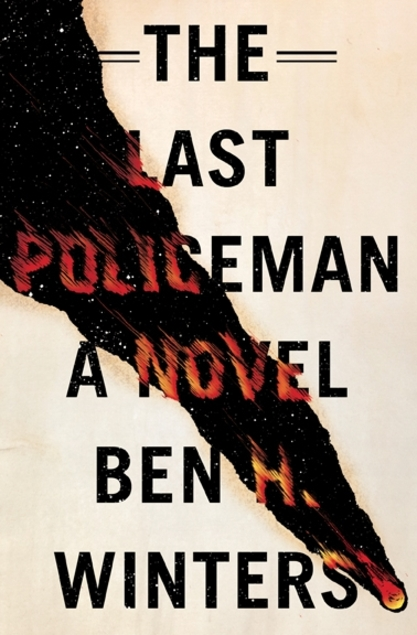 In six months’ time, an asteroid is going to slam into the Earth, ending all life as everyone knows it, and Detective Hank Palace just wants to do his job.
In six months’ time, an asteroid is going to slam into the Earth, ending all life as everyone knows it, and Detective Hank Palace just wants to do his job.
Peter Zell – actuary, ordinary, quiet man, fellow-waiter-for-the-End – is found dead in a McDonald’s bathroom. Suicide, of course. It must be, because all over Concord, and all over the world, people are killing themselves in a preemptive epidemic – it’s the end of the world, and things are beginning to get bad, and they’re only going to get worse before – BAM! – so why not get it out of the way sooner rather than later?
Only Hank – who wanted to be a detective since he was a kid, now, finally, has the chance; all around him people are walking off their jobs, because who wants to clock in when death, confirmed in odds and orbit is hurtling on a direct and unstoppable path towards your species’ sole habitable planet? And those people happen to include detectives, which means rookie cops get promoted years early, making Hank the luckiest, unluckiest man in Concord, depending on your perspective; hey kid, you made it, sorry about the asteroid. Ain’t the just the old sting of existential dread that comes with being a Millennial? – Only Hank isn’t so sure Peter Zell killed himself. Hank, still mostly bright-eyed, still dedicated, with Farley and Leonard’s Criminal Investigation’s textbook memorized, is pretty sure that Peter Zell was murdered.
The Last Policeman is not your everyday detective novel. The elements of a typical mystery are there: the suspects, the clues, the red herrings and the twists, the suspense that moves quick enough to have your spine straightening and your eyes brightening with quickened interest; did we get ‘em, did we figure it out? Remove the asteroid and you have a standard detective story: was a man murdered, and for what? Depending on who the man was, maybe there’s less dragging of feet. Put back the asteroid. Now a man is dead. Maybe murdered, maybe not; does it matter?
To Hank, it matters. He wants to know the story (175). He wants to do his job; a man is dead and that matters, even though they’re all going to die.
I love a good detective story, and if there’s a good, solid human element mixed with a literary style, then I am sold. Winters crafted a doomed world but kept Hank’s chin up enough despite, as one character calls it, “the weight of all this unbearable immanence” (39). It’s a complicated, bittersweet novel that surprised me by having bright moments of humor. Since it is the first in its trilogy, it left some threads dangling, and I am curious to see how Winters develops those plotlines. It is interesting to start a series where the end is pretty much a given – and not a particularly, one must assume, happy end. There was an element of denial I found myself falling into as I read. Because I – like Hank, like everyone – don’t want it to end like that.
Which creates a fascinating connection between the characters and the reader: to hope, in that ever-irrational, ever-human way, for an impossible way out; that somehow, someone failed to carry a one somewhere and threw the entire model off course; that at the last moment the asteroid is going to veer away and the disaster will be averted and we will all go on living.
The Last Policeman is followed by Countdown City and World of Trouble.
Winters, Ben H. The Last Policeman. Quirk Books, 2012.
Friday Reads: Sissy: A Coming-of-Gender Story by Jacob Tobia
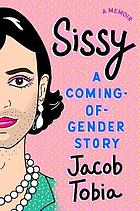 Sissy: A Coming of Gender Story is a comic memoir by Jacob Tobia. I recommend the audiobook, read by the author, whose voice is a like a comfortable but sparkly sweater. Tobia is a vegetarian, gender-nonconforming, Syrian-American from North Carolina who got into (but didn’t go to) Harvard, and who grew up loving Sunday School; and if you don’t already know that you have a lot in common with our author, you will realize it quickly.
Sissy: A Coming of Gender Story is a comic memoir by Jacob Tobia. I recommend the audiobook, read by the author, whose voice is a like a comfortable but sparkly sweater. Tobia is a vegetarian, gender-nonconforming, Syrian-American from North Carolina who got into (but didn’t go to) Harvard, and who grew up loving Sunday School; and if you don’t already know that you have a lot in common with our author, you will realize it quickly.
Tobia tells their story in an irreverent and authentic way, focusing on recognizing human needs, understanding human impulses, acknowledging human discomfort and pain, and just simply being a living and learning person. You might expect the book to be sad or “heavy,” and Tobia does not shy away from frank discussion and language about serious and emotional topics and events. But the book is funny, even while addressing all of that with respect (and did I mention frank language?). As Tobia told Salon in an interview about the book, “I don’t want to talk about what being trans means so much as I want to talk about how being trans feels.” Tobia is not trying to tell the one trans narrative that speaks for all trans people—they are telling one person’s story, their own, and we can all relate.
In the introduction, Tobia discusses gender identity in the context of physical and emotional health that’s especially illuminating. We all have a relationship with our bodies and our genders, relationships that are dynamic over our lifetimes. And we don’t stop growing and learning when we become adults. If anything, that’s when the truly informed growth and awareness can start. The book goes on to tell an engaging story that is far from being over.
Tobia, Jacob. Sissy : A Coming-of-Gender Story. Penguin Publishing Group, 2019.
Friday Reads: The Lost for Words Bookshop
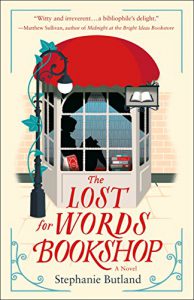 The Lost for Words Bookshop by Stephanie Butland opens with Loveday Cardew, rescuing a book from the gutter in York. England, not Nebraska. Just thought I would clarify so you can get the accent right in your mind. Anyway, the book she pulled from the gutter is sheer poetry, mixed with a bit of mud and grit. It also leads her to another poet, but that’s all I’ll say about that.
The Lost for Words Bookshop by Stephanie Butland opens with Loveday Cardew, rescuing a book from the gutter in York. England, not Nebraska. Just thought I would clarify so you can get the accent right in your mind. Anyway, the book she pulled from the gutter is sheer poetry, mixed with a bit of mud and grit. It also leads her to another poet, but that’s all I’ll say about that.
Despite her name, Loveday hates people with an awkward passion. It’s easier to control written people than real. When characters annoy you, just skip a few pages or shut the book in their face. It’s been known to happen.
But there is a bit of love mixed between the pages of The Lost for Words Bookshop. Not surprisingly, Loveday is the Byronic hero(ine) with the tortured past here. There is always a tortured past, isn’t there? But it’s not all angst. If it were, I wouldn’t be writing this review right now. I would have shut the book in her face. With enthusiasm!
Instead there is growth and a tentative hope for a better future. As often happens, this book about books is really about people. Loveday’s journey shifts between Crime, Poetry, and History. These are not my favorite sections of the bookstore, but this is also not your traditional crime novel. This particular crime had been solved years ago. Sort of. The mystery was how to deal with the fallout. You’ll have to read it to find out.
If you like books about the love of books, paired with a heroine who is discovering life, The Lost for Words Bookshop will help you find your way.
#BookFaceFriday “Stoner”
This week’s #BookFaceFriday is kind of a bummer, man…
Does this #BookFace look familiar? You might recognize this cover from Sam Shaw’s recent Friday Reads post about “Stoner” by John Williams (NYRB Classics, 2006). Sam, our Planning and Data Coordinator, was gracious enough to pose for this week’s photo.
“A beautiful, sad, utterly convincing account of an entire life…I’m amazed a novel this good escaped general attention for so long.” —Ian McEwan
Friday Reads is a weekly book review series posted by Nebraska Library Commission staff. Former NLC staffer Laura Johnson created this series to model the idea of talking about books and to help readers get to know our staff a little better. We hope that our book reviews will start a conversation about books among our readers and encourage others to share their own reviews and recommendations. Past Friday Reads are archived on the NCompass blog, or you can browse a list of reviews here.
Love this #BookFace & reading? Check out our past #BookFaceFriday photos on the Nebraska Library Commission’s Facebook page!
Posted in Books & Reading
Tagged #FridayReads, Book Face Friday, bookface, bookfacefriday, Friday Reads
Leave a comment
Friday Reads: The Woman in the Window, a novel by A.J. Finn
Shortly after I started back in April I was asked if I wanted to contribute to the commissions “Friday Reads” blog and of course I said “Yes!” And then I froze. I had been moving so I haven’t read anything in a while! Nothing I had with me seemed to work and nothing recently seemed intriguing. So after some (okay…a lot!) of browsing I finally came across “The Woman in the Window” by A.J. Finn. It mainly caught my eye as my cover says “Soon to be a major motion picture” and I’m the type of person who always has to read the book first. Rarely is a movie better than the book but with this one we’ll just have to wait and see.
Told from the perspective of one Dr. Anna Fox who, due to her battle with agoraphobia, has spent the last ten months in her house having what she can delivered so she never has to leave. She keeps tabs on her neighborhood through the lens of her camera and “see’s something she shouldn’t”. I’ve never seen “Rear Window”, or much of it at least, but it seems like there are a number of connections that can be made between this book and the movie. A person trapped in their home thinks they see something nefarious and people don’t believe them. The connection is made even stronger through Anna’s own love of old movies, including “Rear Window”, which are referenced throughout the book.
As for the rest of the characters A.J. does a good job fleshing each of them out but I hate to say it – he does nothing with them. Most of them have very little connection to the plot and you never really get to know any of them well. Unfortunately, you never really get to know Anna very well either as major parts of her story, and why she is the way she is, aren’t revealed until you’re ¾ of the way through the book. Thankfully the book redeems itself in other ways and really is a quick read. The “chapters”, some of which are only a page long, are grouped together by date and the flow that this gives the book never waivers. Plus, the way AJ writes really gives you an almost visceral feel for what’s going on (hence the reason I feel that if done right the movie might out shine the book.)
I wouldn’t recommend “Woman in the Window” to hard core mystery buffs, but other than that I found the book enjoyable. I normally don’t like mysteries as I find it frustrating that I usually figure it all out only sentences before the characters do. “The Woman in the Window” is more suspense story than a true “who-done-it” type of mystery, though, and it keeps you on your toes by throwing twists and turns at you constantly making you, and Anna, question if your reasoning is correct. With that being said in the end I was able to figure out the “who” well before it’s revealed in the book.
Friday Reads: Convenience Store Woman by Sayaka Murata
 Keiko Furukura realized as a child that she was different from everyone else. Her classmates and teachers were increasingly dismayed by her behavior and her family desperately wanted her to be “cured” and become “normal.” Until Keiko found her job at the Smile Mart convenience store during university, she felt doomed to be the odd one out.
Keiko Furukura realized as a child that she was different from everyone else. Her classmates and teachers were increasingly dismayed by her behavior and her family desperately wanted her to be “cured” and become “normal.” Until Keiko found her job at the Smile Mart convenience store during university, she felt doomed to be the odd one out.
But at Smile Mart, the world makes perfect sense. She can follow the employee behavior manual, mimic the speech and dress of her co-workers, and everyone seems happy with her. Flash-forward 18 years; working part-time at a convenience store is no longer enough to keep her friends and family satisfied, and Keiko finds that it is time for a change.
This story gives some insight into the importance of conformity in Japanese culture; it is more important to Keiko’s friends and family that she meet societal expectations, to get married or find a real career path, than to live a content life as a misfit…even if that marriage is dysfunctional or the career makes her unhappy. Keiko must decide if she will do as others think she should… or be true to herself. A short read, this humorous yet heart-breaking tale may have you wondering who the misfits really are.
Murata, Sayaka. Convenience Store Woman. Translated by Ginny Tapley Takemori, Grove Press, 2018.
Friday Reads: ‘Tales from the Perilous Realm’ by J.R.R. Tolkien
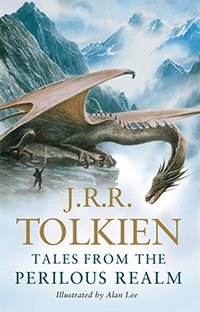 J.R.R. Tolkien is best known as the creator of Middle-earth, the setting of The Lord of the Rings and The Hobbit. But, did you know that he wrote other stories that don’t take place in Middle-earth?
J.R.R. Tolkien is best known as the creator of Middle-earth, the setting of The Lord of the Rings and The Hobbit. But, did you know that he wrote other stories that don’t take place in Middle-earth?
In addition to being a fantasy author, Tolkien was an academic. He wrote modern translations of Sir Gawain & The Green Knight and Beowulf as well as the narrative poems The Legend of Sigurd and Gudrún, based on Norse mythology, and The Fall of Arthur, inspired by the legend of King Arthur.
Those longer works can be a bit hard to get through. Personally, I prefer his shorter original fairie tale novellas. Some of them are collected in Tales from the Perilous Realm:
Roverandom is the story of a dog who is turned into a toy by an angry wizard and recounts his adventures as he searches for a way to undo the spell.
Farmer Giles of Ham is an accidental hero, who must deal with a dragon who has invaded his village.
Smith of Wootton Major is the tale of a blacksmith who, after eating a magical cake, is able to enter the Land of Faery.
Leaf by Niggle is a short story about a painter struggling to finish his greatest work.
The Adventures of Tom Bombadil is the only selection in this book related to Middle-earth. It is a collection of poems written by Hobbits, such as Bilbo Baggins and Sam Gamgee.
I have discovered that Tolkien is a fun and creative storyteller, in all forms. If you’ve only read his books based in Middle-earth, I highly recommend checking out his other stories.
Friday Reads: The Remarkable Journey of Coyote Sunrise by Dan Gemeinhart
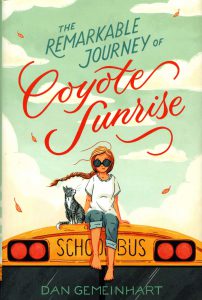 Coyote (12) travels with Rodeo (her father, but don’t call him that) in a refitted old school bus. They go where any whim takes them and only think of the future. One day when Coyote talks to her grandma, she learns the park in their old neighborhood is going to be leveled to become housing. Now Coyote must get home, somewhere Rodeo will not go, so she will trick him into it. She must retrieve the memory box she, her sisters and her mom buried in the park five years ago. They are in Florida and need to get to Washington state in four days, without Rodeo realizing where they are going.
Coyote (12) travels with Rodeo (her father, but don’t call him that) in a refitted old school bus. They go where any whim takes them and only think of the future. One day when Coyote talks to her grandma, she learns the park in their old neighborhood is going to be leveled to become housing. Now Coyote must get home, somewhere Rodeo will not go, so she will trick him into it. She must retrieve the memory box she, her sisters and her mom buried in the park five years ago. They are in Florida and need to get to Washington state in four days, without Rodeo realizing where they are going.
Along the way they give some other travelers a lift and an interesting fellowship develops. First, she finds a kitten who is unusually quiet and seemingly knowing about what humans need, a bit like Coyote herself. She invites Lester to ride with them to Montana to reunite with his former girl. Salvador and his mom help Coyote out of a tough spot right when their car dies, so they join the group. A couple of others join for a spell, including a considerate goat named Gladys. Heartfelt and full of fun too, this book is able to move from silly to touching and bring a tear to your eye. It is aimed at upper elementary to early middle school readers, or for anyone who enjoys a good road trip book about family.
Other books by the author include Good Dog, Scar Island and The Honest Truth.
Gemeinhart, Dan. The Remarkable Journey of Coyote Sunrise. Henry Holt and Co., 2019.
Friday Reads: The Sound of a Wild Snail Eating by Elisabeth Tova Bailey
“I found a snail in the woods. I brought it back and it’s right here beneath the violets …”
“Is it alive?”
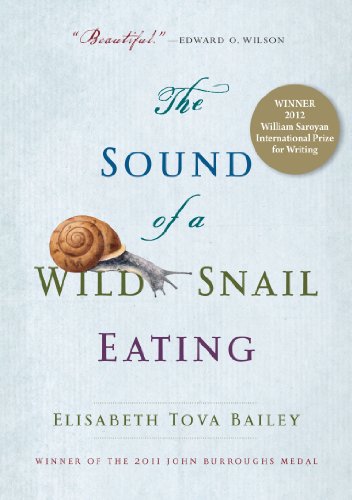
This is the first question Bailey asks of the snail in her book, The Sound of a Wild Snail Eating, in which she recounts her survival through a debilitating relapse of her chronic illness. Once a traveler and gardener, she is rendered bedbound and alone, save for the occasional visits of loved ones and her caregiver. And then she is gifted the company of a wild woodland snail, brought from its habitat with a friend’s potted offering of wild violets.
As it so happens, the snail is alive, and its motion and unique liveliness breathes purpose into Bailey’s stalled life.
The Sound of a Wild Snail Eating is a small book. Its pages number at 170; 191 if you count the acknowledgements and bibliography. It’s a quick read that gets technical at times but never becomes wholly inaccessible. Its style, complete with pages dotted here and there with monochrome drawings of snails, is a tribute to the 19th century naturalists of whom Bailey seems fond, and she follows in their footsteps – or, rather, to borrow her imagery, she glides along the slime trail they left behind.
Bailey draws from scientific literature and poetry in rhythm with her observations, making the book one-part informative essay and one-part ode. Peppered in between discussions of the snail’s locomotion, diet, and evolution are the chronicles of her illness, told in an almost tangential fashion, secondary but parallel to the snail’s life, where she both wishes to be more like the snail and longs to feel human again. Is it alive, she asks of the snail and its stillness during their first introduction. Am I alive, she seems to ask; or, the darker question that lingers, one with an answer she couldn’t know, will I survive this?
The Sound of a Wild Snail Eating is best enjoyed in the perfect stillness that might allow oneself to overhear a snail at its dinner. Bailey asks the reader to slow down and ponder – and wonder – at nature and its small, unnoticed creatures and their tiny, significant lives. The reward for your patience is a quiet sort of jubilation and a feeling of hopeful resilience.
Bailey invites us to consider the snail and, in doing so, asks if we might also see ourselves.
Bailey, Elisabeth Tova. The Sound of a Wild Snail Eating. Algonquin Books of Chapel Hill, 2010.
Friday Reads: Inheritance by Dani Shapiro
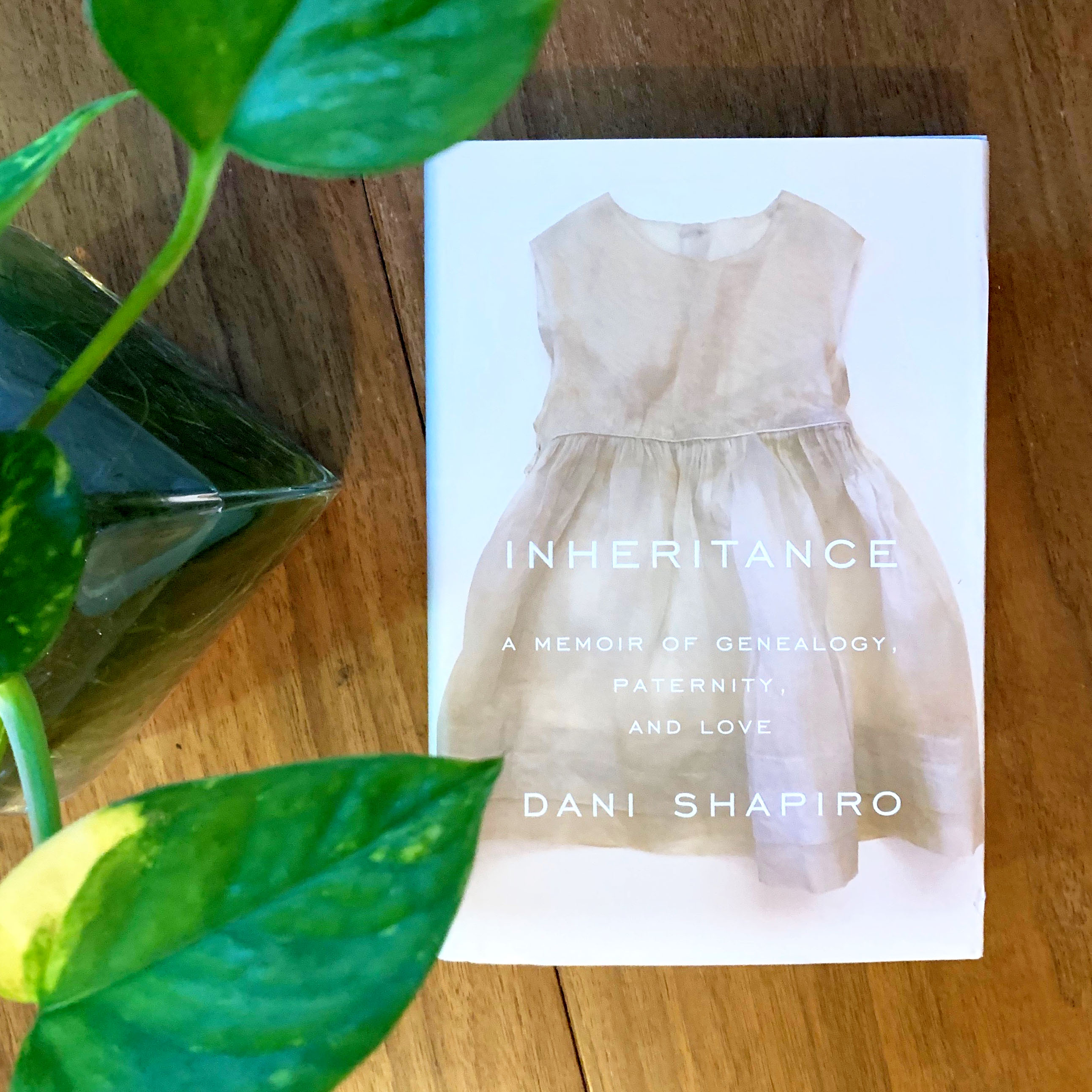 What do our parents really leave us? Is it money, or a house? Seeing my father’s eye’s when I look in the mirror or my mother’s nose? Is it memories, the good and the bad? What if you found your dad wasn’t your biological father? That all the family history, the aunts and uncles, the cousins and grandparents, that they didn’t really belong to you. At least not in the way you thought. This is the basis for Dani Shapiro’s poignant and timely memoir, “Inheritance: A Memoir of Genealogy, Paternity, and Love.” This is not just the tale of the author’s search for her biological father, but her desire to know the secrets her parents kept.
What do our parents really leave us? Is it money, or a house? Seeing my father’s eye’s when I look in the mirror or my mother’s nose? Is it memories, the good and the bad? What if you found your dad wasn’t your biological father? That all the family history, the aunts and uncles, the cousins and grandparents, that they didn’t really belong to you. At least not in the way you thought. This is the basis for Dani Shapiro’s poignant and timely memoir, “Inheritance: A Memoir of Genealogy, Paternity, and Love.” This is not just the tale of the author’s search for her biological father, but her desire to know the secrets her parents kept.
I listened to the audiobook, published by Random House, and narrated by the author herself. Listening to the author tell her own story, hearing her voice and emotion as she recounts the journey she takes after this discovery made the experience even more enjoyable. I choose this book in my attempt to read more non-fiction this year, and it didn’t disappoint.
Shapiro, D. (2019). Inheritance: A Memoir of Genealogy, Paternity, and Love.
Posted in Books & Reading, General
Tagged #FridayReads, Book Review, Dani Shapiro, Friday Reads, Inheritance, Memoir
Leave a comment
Friday Reads: The Library Book by Susan Orlean

The Library Book by Susan Orlean is a necessary and fascinating read for anyone who has used a library—even more so for anyone who works in a library. Orlean tells the story of the Los Angeles Central Library, its founding and its operation, and about a dramatic 1986 fire and the following investigation. Of special interest to Nebraskans, the building itself was designed by Bertram Goodhue, who was also the architect for another building you might be more familiar with: the Nebraska State Capitol building.
The way Orlean tells the story is as interesting as the investigation itself. The book is true crime, history, biography, and homage. She describes her own emotional connection to visiting her hometown library with her mother as a child, and then returning to libraries much later, after having a child of her own, and she begins to appreciate what an incredible societal wonder the modern library is.
Orlean also tells the stories of pioneers, free thinkers, and risk takers who made the Los Angeles Central Library possible, like Mary Foy, who became the head librarian of the Los Angeles Central Library in 1880, when men still dominated the field—and when she was only eighteen years old. With thoughtfulness and sensitivity, she talks about the emotional aftermath of the 1986 fire, for the workers and patrons of the Central Library, with personalized detail. She addresses the realities of the twenty-first century public library with respect and without sentimentality.
I dragged my feet finishing this book, because I didn’t want it to end. I knew from the formatting of the first page—I won’t give away how each chapter is introduced—that I was reading a book about libraries by someone who knew them and loved them.
If you’re old enough to remember 1986, but you don’t remember the Los Angeles Central Library fire, it might be because another catastrophic event happened a few days before in Chernobyl, which overshadowed the fire in the news. After you read the book, you might want to watch news clips and video of the time—and view other reactions to the book. The story told by the book has encouraged a reckoning and remembering by those affected, and it is powerful.
I took my copy of the book on a field trip to another library designed by Goodhue—in the aforementioned Nebraska State Capitol building. Pretty library photos will be on social media soon, and I will add a link here when that happens.
Orlean, S. (2018). The library book.
Friday Reads: All Systems Red (The Murderbot Diaries #1) by Martha Wells
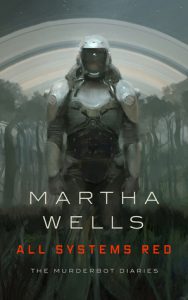 “As a heartless killing machine, I was a terrible failure.”
“As a heartless killing machine, I was a terrible failure.”
Murderbot (as they call themself) is a part organic/part machine SecUnit (security unit) who is contracted out by The Company to various research and exploration teams traveling to other planets to keep them safe, and to keep an eye on what they’re doing. Unlike other SecUnits, however, this particular one has hacked their own (cheaply made) governor module so they no longer have to follow the Company’s strict protocols. Rather than turning against all humans or anything overly violent, Murderbot just wants to be left alone to watch thousands of hours of sci-fi/adventure soap operas and to do the bare minimum of work (just enough so no one realizes they now have free will).
The current job includes a group of humans who are exploring a planet for scientific reasons that don’t matter much to Murderbot. This is a fairly easy job until equipment starts to fail, creatures start attacking, and vital pieces of information seem to be missing which puts the humans all in danger. Now they must find out who is behind the conspiracy and what’s going on, keep the humans safe from other (more heartless) robots, and get them all off of the planet while desperately trying to avoid more social interaction than is necessary.
All Systems Red is the first novella of four in The Murderbot Diaries which all follow our snarky SecUnit. Quick reads with fast-paced stories, engaging characters, lots of snarky humor, cyborg/robot/human battles, and tentative friendships.
- All Systems Red
- Artificial Condition
- Rogue Protocol
- Exit Strategy
Friday Reads: Foundryside: A Novel, by Robert Jackson Bennett
Great world buildings, eccentric characters, and a solid plot that keeps me guessing, will always catch my attention, and Foundryside, by Robert Jackson Bennett has all of that and more. In so many ways it’s also unusual–set in a tropical seaport town, of a world that has seen an apocalypse wrought by an unusual type of magic called “scriving” by the surviving, thriving, inhabitants.
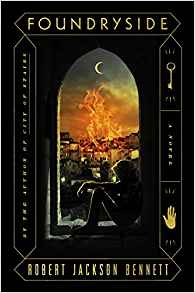
Foundryside by Robert Jackson Bennett
The merchant houses of Tevanne, rediscovered the art, and used the power of “scriving” to conquer other cities, create empire, and spy on each other. The tools they create are powerful, arrows that vibrate so hard as they go through the air that they disintegrate; rapiers that accelerate when put into motion, because they believe they’re going so much faster, and can go through tree trunks; and suites of armor that barely need inhabitants to kill. So of course, they create these items, and more, behind their own walls. Each merchant house is nearly a city-state with their own culture.
The people unlucky enough not to be born to the houses, or useful to them, live in the commons, the areas outside their walls. Like Sancia, a very good thief, who has a rare ability of being able to listen, and understand the scrivings on objects–floors, walls, and locks. A job comes her way through her fence to steal an item that’s just arrived in Tevanne. Which is when everything goes wrong, of course. The item is a very old, rare, scrived artifact, from the original practitioners of scriving, and talks, in a way. Its name is Clef. And he’s freaked out that she can hear him. She’s very freaked out that he can talk! And life just gets more complicated from there, with scions of merchant houses run amok, scrived humans (which shouldn’t exist), the already slightly crazy practitioners of a fractured art, and a lot of people doing impossible things such as shooting crossbow bolts at our heroes.
Included here is an interview with the author on SYFYWire.
Foundryside, Robert Jackson Bennett, Crown, New York, ISBN 978-1-5247-6036-6
Posted in Books & Reading, Uncategorized
Tagged #FridayReads, Dark Fantasy, Fantasy, Foundry, Friday Reads, Robert Jackson Bennett, Young Adult
Leave a comment
Friday Reads: The Alchemist by Paulo Coelho
This boo k has been sitting on my bookshelf, unread, for about a decade. I bought it because a few friends had raved about the life-altering, mind-bending power of this book. Needless to say, I was skeptical.
k has been sitting on my bookshelf, unread, for about a decade. I bought it because a few friends had raved about the life-altering, mind-bending power of this book. Needless to say, I was skeptical.
I didn’t say anything back them, but I suspected the only reason my friends enjoyed the book is because they were already in the middle of changing their own lives when they happen to stumble upon the book. The Alchemist has the ability to pour gas on a lit fire to make the flames explode upward. But it cannot apply spark to the flint over dead leaves.
The Alchemist by Paulo Coelho is the story of a young man named Santiago who wants to see the world. He starts out as a shepherd who quietly enjoys what he does. But the endless horizon calls out to him. Thus his journey begins. Along the way, he meets a variety of mystically inclined individual(s) who provide him with endless philosophical advice to drive him towards his own Personal Legend.
He winds up in pursuit of treasure near the pyramids in Egypt. It’s a wild ride. When I tried to read this book the first time, I was turned off by phrases like ‘Personal Legend’, ‘Soul of the World’, and other over-the-top phrases. Ten years later, when the book called to me again, I realized that these are just phrases. Depending on your own personal beliefs, you can mentally exchange these phrases for words that speak to you. The book was already translated once from the Brazilian author’s native Portuguese.
For me, this book was a way to see myself from a more global perspective. We will all travel through life, meeting different people who will teach us different things. As I learn more about how people in other parts of the world live, I find my own Personal Legend shifting. The small irritations in life don’t seem to matter quite as much. I have food, clean water, access to learning tools, plenty of books, all things necessary to a good life. Why not help those who don’t have access to that already?
If you’re ready to change your life, or are open to seeing other ways of life, this could be a good book. It’s a quick read, and can be a great catalyst for change. As you’re reading your own meaning into the book, keep in mind that sometimes the journey is vastly more important than the end goal.
Maybe I will pick up this book in another ten years and see a completely different story.
